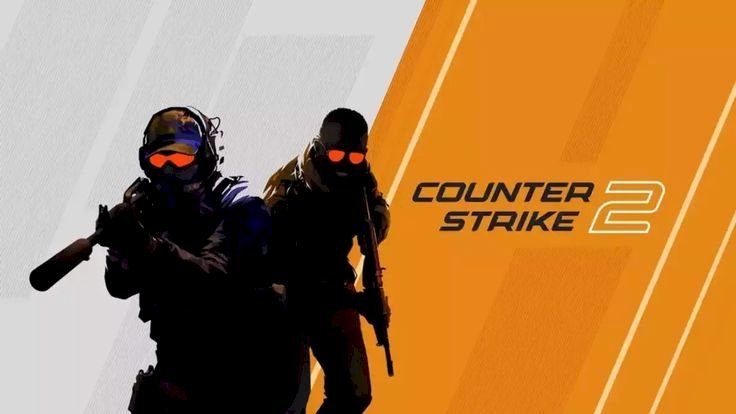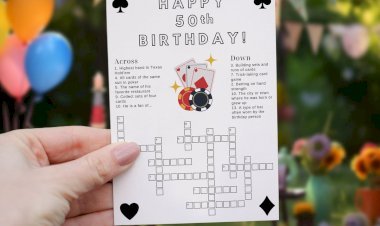The Story Behind Counter-Strike 1.6 (2003) Game Icons and Banners
Discover the legacy of Counter-Strike 1.6 (2003) game icons and banners, their impact on gaming culture, and their influence on shooter games.

Counter-Strike 1.6 (CS 1.6), released in 2003, has become one of the most iconic games in online gaming history. Known for its realistic gameplay and heavy focus on teamwork, CS 1.6 remains popular to this day, more than 20 years after its release. Part of the game’s charm is found in its unique icons and banners, which not only add a distinct style but also serve functional purposes to improve gameplay. These visuals have become symbols of the game and are fondly remembered by fans.
This article explores the history, design, and impact of Counter-Strike 1.6’s icons and banners, highlighting how these visuals have influenced gaming culture and continue to hold nostalgic value for players around the world.
Counter-Strike 1.6 (2003) – A Revolution in Online Gaming

When Counter-Strike 1.6 launched in 2003, it quickly became a worldwide phenomenon. Originally a mod for Half-Life, Counter-Strike was eventually acquired and officially released by Valve. Its intense focus on team-based tactics, clear objectives, and realistic gunplay set it apart from other shooters at the time. According to a report by SteamDB, the game has been downloaded over 25 million times, and its popularity has only continued to grow, especially within online communities and in modding circles (SteamDB).
One reason Counter-Strike 1.6 stood out was its simple yet effective icons and banners. These visuals allowed players to quickly understand their in-game status and navigate the game environment, which contributed to the smooth gameplay experience. The game’s minimalist design was a crucial part of its appeal, as it kept players focused on strategy without unnecessary distractions.
The Evolution of Game Icons in Counter-Strike 1.6

The icons in Counter-Strike 1.6 were thoughtfully designed to be both functional and memorable. They conveyed important information at a glance, which was essential for players to stay engaged in the fast-paced action. Key icons included:
- Health Icon: Showed players their remaining health, making it easy to know when to play defensively.
- Armor Icon: Indicated the level of protection, helping players assess how much damage they could withstand.
- Weapon Icons: Represented different weapons, allowing players to identify their equipment quickly and make strategic choices.
These icons were designed to be simple and easy to identify, which helped players stay immersed in the gameplay. This focus on clear, functional design has been cited by game developers as an influence on many modern first-person shooters (GDC Vault), demonstrating how CS 1.6 set an industry standard for effective iconography.
Read Also: How Many People Are Playing Fortnite Right Now?
The Design Aesthetic of Counter-Strike 1.6 Banners

The banners in Counter-Strike 1.6 added to the game’s military-inspired atmosphere. With dark color schemes, bold fonts, and gritty visuals, the banners gave CS 1.6 a unique, tactical feel. These banners were seen in the game menus, loading screens, and in match interfaces, often displaying team names, game modes, or server information. Their consistent design helped reinforce the game’s identity as a realistic, team-focused shooter.
Even today, the style of these banners continues to influence graphic design in competitive games. Fan communities still share modified versions of these banners, maintaining the look and feel of the original game. The Counter-Strike aesthetic has set a lasting visual trend, particularly in esports-related graphics.
How Community and Modding Shaped the Game’s Icons and Banners

One of the most remarkable aspects of Counter-Strike 1.6’s legacy is the role of the community in expanding the game’s visuals. In the early 2000s, CS 1.6 allowed players to modify certain files, leading to a wave of custom icons, banners, and skins. Platforms like GameBanana and ModDB became hubs for players to share these custom creations, allowing for a unique look and feel in each server (GameBanana).
Custom icons and banners created by fans became widespread, with some designs even gaining popularity across multiple servers. By 2024, these mods are still widely available, with players continuing to create and download custom content. This has allowed Counter-Strike 1.6 to maintain its relevance and has kept the game visually fresh for new generations of players.
Impact of Game Icons and Banners on Gameplay Experience

The icons and banners in CS 1.6 weren’t just for show; they had a significant impact on the gameplay experience. The icons provided essential information that allowed players to stay aware of their health, ammo, and weapon status without pausing or navigating through menus. This functionality was especially useful during high-stakes matches where split-second decisions could mean the difference between winning or losing.
For instance:
- Quick Recognition: Icons made it easy to gauge player status instantly, ensuring that the focus remained on teamwork and tactics.
- Improved Communication: Banners and team identifiers made it clear which players were allies, which reduced confusion and promoted better coordination.
This simplicity in design has continued to influence many modern first-person shooters. Developers of games like Rainbow Six Siege and Valorant have acknowledged the value of clear, functional icons in creating an immersive, fast-paced experience (Ubisoft Developers).
The Influence of Counter-Strike 1.6’s Branding on Modern Shooters

Counter-Strike 1.6 left a significant mark on the design of modern shooters. Its use of clear, easily recognizable icons and banners has become a standard for competitive games that emphasize fast reflexes and team strategy. Today, games like Call of Duty, Apex Legends, and Rainbow Six Siege utilize similar icons to provide players with immediate, easy-to-understand information.
In 2024, gaming industry reports indicate that Counter-Strike remains one of the most referenced games in terms of design influence. Developers regularly mention CS 1.6 as a foundational model for creating accessible, visually effective game elements (IGN Industry Report). The game’s icons and banners continue to serve as examples of how effective design can enhance gameplay without overwhelming the player.
Read Also: The Story Behind Minecraft (2009) Icons and Banners
Counter-Strike 1.6 Icons and Banners in Esports and Tournaments

Counter-Strike 1.6 was one of the earliest games to be featured in esports tournaments, helping to shape the look and feel of competitive gaming. The icons and banners became familiar sights in early tournaments, where they were used to display team names, event information, and sponsorships. This helped establish a professional presentation that engaged audiences and promoted the esports experience.
Even in 2024, Counter-Strike events often feature similar styles, paying tribute to CS 1.6. This connection to the game’s roots has helped maintain its legacy in the competitive gaming community. Banners and icons from CS 1.6 remain part of the nostalgic visual language used in modern esports, making it a lasting symbol of early competitive gaming.
The Legacy of Counter-Strike 1.6 Icons and Banners

Today, the icons and banners from Counter-Strike 1.6 are celebrated as part of gaming history. Fans regularly share wallpapers, artwork, and even clothing featuring these visuals on platforms like Reddit and Twitter, which keep the memory of CS 1.6 alive in the gaming world. Additionally, Counter-Strike’s 2024 anniversary saw fans sharing their favorite icons and banners, highlighting the game’s lasting impact on both fans and gaming culture (Reddit CS Community).
For fans, these visuals represent an era when gaming was simpler but just as engaging. The nostalgic appeal has helped make Counter-Strike 1.6 a timeless classic, and its design choices remain relevant in the industry.
Conclusion
Counter-Strike 1.6 isn’t just another game; it’s a classic that changed the gaming world. Its unique icons and banners played a significant role in making the game memorable, by providing players with easy-to-understand visuals that improved gameplay. These elements didn’t just add style—they defined an experience that continues to influence competitive gaming today.
The game’s legacy lives on in the countless fans who still appreciate its visuals and the new games that draw inspiration from its design. In many ways, Counter-Strike 1.6’s icons and banners represent a powerful connection between clear design, effective gameplay, and a strong gaming community.
FAQs for Counter-Strike 1.6 (2003) Game Icons and Banners
What is the significance of icons in Counter-Strike 1.6?
Icons provided essential information about health, armor, and weapons, helping players stay focused on the game and make quick decisions.
How did Counter-Strike 1.6 influence game icon design?
It set a standard for clear, functional icons that many modern games, such as Rainbow Six Siege and Apex Legends, have adopted.
Are Counter-Strike 1.6 banners still used today?
While original banners aren’t used in new games, their influence can be seen in Counter-Strike esports, fan art, and community mods.
Did Counter-Strike 1.6 allow custom icons and banners?
Yes, the modding community created many custom icons and banners, allowing for personalization and enhancing community involvement.
Why are Counter-Strike 1.6 icons and banners considered iconic?
Their clear design and impact on gaming culture have made them beloved symbols of the game and its legacy in the esports community.




























